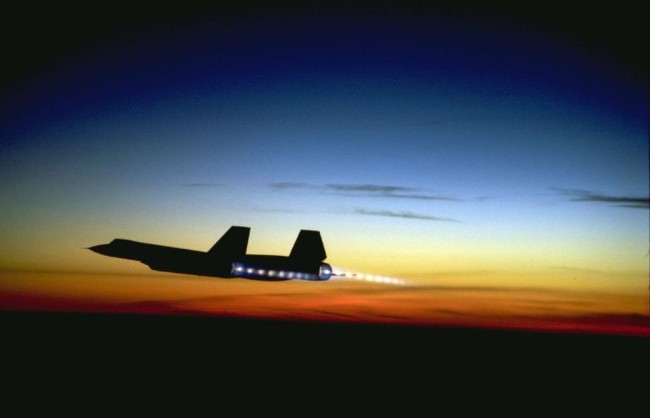

When it comes to curb appeal, few airplanes in history can match the look of the SR-71 “Blackbird.” And nothing in the Air Force’s inventory — past or present — can beat its signature performance characteristics. Here are 11 photos that show why the Blackbird remains the standard of aviation cool:
The SR-71 “Blackbird” was a high-speed, high-altitude reconnaissance aircraft developed by Lockheed’s legendary “Skunk Works” team in the 1960s.

The Blackbird was capable of speeds exceeding Mach 3.0. The fuselage was designed to expand at high speeds, which caused the airplane to leak fuel on the ground because the panels fit very loosely when jet was parked.

The Blackbird’s service ceiling (max altitude) was 85,000 feet, which forced crews to wear pressure suits and astronaut-type helmets.

SR-71s were manned by two aviators: a pilot and a Reconnaissance Systems Officer who monitored surveillance systems from the rear cockpit.

Only 32 Blackbirds were manufactured, and they were in service from 1964-1998. Despite over 4,000 combat sorties, none of the planes were lost due to enemy fire. However, 12 of them were destroyed in mishaps.

Claustrophobic types need not apply. The narrow space between canopy rails didn’t give crews much room to move around. The outer windscreen of the cockpit was made of quartz and was fused ultrasonically to the titanium frame. The temperature of the exterior of the windscreen reached 600 °F during a mission.

Nothing ‘glass’ about this cockpit. The SR-71 presented the pilot with a dizzying array of steam gauges and switches. And visibility out the front wasn’t the greatest.

Although not technically a stealth aircraft, the SR-71 was hard for enemy SAM systems to spot because it was designed with a low radar cross section in mind.

Because of its high approach speed the Blackbird used a drag chute to slow down on the runway after touchdown.

Aerial refueling capability allowed the SR-71 to perform long-range, high endurance missions.

The Blackbird still holds the record for fastest air-breathing manned aircraft (a record it broke in 1976). Although the SR-71 is no longer in service, the legend lives on.

